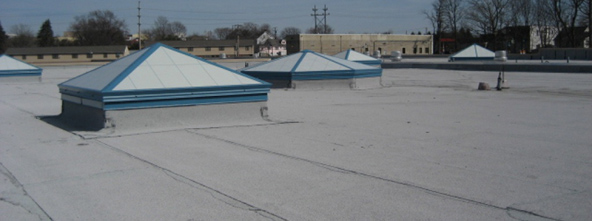Built-Up Roof Systems

Built up roof (BUR) membranes, have been used in the U.S. for more than 100 years. These roof systems are commonly referred to as "tar and gravel" roofs. BUR systems generally are composed of alternating layers of bitumen and reinforcing fabrics that form a finished membrane. The number of plies in a cross section is the number of plies on a roof: The term "four plies" indicates a four ply roof membrane construction. At times, a base sheet, used as the bottommost ply, is mechanically fastened. Built up roofs usually are considered to be fully adhered if applied directly to roof decks or insulation.
The reinforcing fabrics also are called roofing felts or ply sheets. Roofing felts are reinforced with either glass-fiber mats or organic mats. Felts are produced in a average width of 36 inches and metric width of about one meter.
The bitumen typically used in BUR roof systems is asphalt, coal tar or cold-applied adhesive. The asphalt or coal tar is heated in a kettle or tanker and then applied by mop or mechanical spreader. Asphalt is a petroleum product refined from crude oil; coal tar is resulting from the distillation of coal. Cold-applied adhesives on average are solvent-based asphalts that don't have to be heated in a kettle or tanker.
Built up roofs are applied in layers coated with hot asphalt and are good choices when there is heavy foot traffic on a roof.
Built Up Roofing systems offer both durability and longevity. These asphalt base sheets, ply sheets and cap sheets are all offered in a variety of smooth and granular surface colors and can be used for new and re-roofing applications.